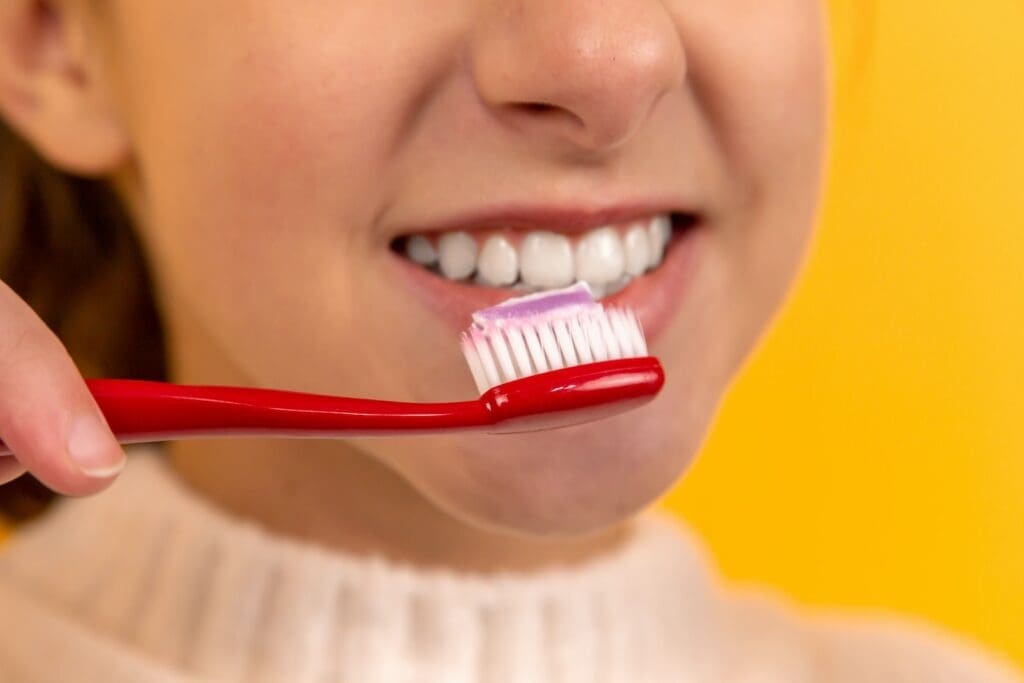
Maintaining good oral hygiene is essential to keep your teeth and gums healthy. Brushing your teeth properly is a fundamental part of oral care. However, many people are unaware of the correct way to brush their teeth. In this article, we will provide a step-by-step guide on how to brush your teeth properly.
Brushing your teeth is not just about scrubbing your teeth with a toothbrush and toothpaste. It requires a systematic approach to ensure that all areas of your mouth are cleaned thoroughly. Brushing your teeth properly helps to remove plaque, prevent cavities, and gum disease. It also helps to freshen your breath and keep your teeth white.
To brush your teeth properly, you need to use the right technique, the right tools, and the right amount of time. The American Dental Association recommends brushing your teeth twice a day for two minutes each time. In the next section, we will provide a detailed guide on how to brush your teeth properly.
Choosing the Right Tools
Proper oral hygiene starts with choosing the right tools for the job. Here are some tips on selecting the right toothbrush, toothpaste, dental floss, mouthwash, and tongue scraper.
Selecting the Right Toothbrush
When it comes to selecting a toothbrush, there are two main types available: manual and electric. Both can be effective if used properly, but an electric toothbrush may be more beneficial for those with limited mobility or difficulty brushing. When selecting a manual toothbrush, look for one with soft bristles that won’t damage the gums or tooth enamel. A toothbrush with a small head can also help reach all areas of the mouth.
Choosing the Right Toothpaste
Toothpaste is an essential component of any oral hygiene routine. Look for toothpaste that contains fluoride, which can help prevent tooth decay. There are also toothpastes available for specific needs, such as sensitive teeth or whitening. It is important to choose a toothpaste that meets your specific needs and preferences.
Importance of Dental Floss
Dental floss is an important tool for removing plaque and food particles from between teeth. It is recommended to floss at least once a day. There are different types of floss available, including waxed and unwaxed, flavored and unflavored, and tape or string. It is important to choose a floss that is comfortable to use and effective at removing debris.
Benefits of Mouthwash
Mouthwash can help freshen breath, kill bacteria, and prevent gum disease. Look for mouthwash that contains fluoride and has been approved by the American Dental Association (ADA). It is important to use mouthwash as directed and not as a substitute for brushing and flossing.
Utilizing a Tongue Scraper
A tongue scraper can help remove bacteria and debris from the tongue, which can help improve breath and overall oral hygiene. Look for a tongue scraper that is made of plastic or metal and has no sharp edges. It is important to use a tongue scraper gently and not to scrape too hard, as this can cause irritation or damage.
Overall, choosing the right products for oral hygiene is essential for maintaining healthy teeth and gums. It is important to select products that meet your specific needs and preferences and to use them as directed.
Proper Brushing Technique
Proper brushing technique is crucial for good oral hygiene. Here are the essential sub-sections to consider when brushing your teeth:
Brushing Motion
When brushing your teeth, use a circular motion to clean the teeth thoroughly. Start with the outside surface of the teeth, then move to the inside surface, and finally the chewing surface. Use gentle circular movements to clean the teeth and gums.
Brushing Duration
It is recommended to brush your teeth for at least two minutes each time you brush. Using a timer can help you maintain the recommended brushing time. Remember to brush all surfaces of your teeth, including the back teeth, and the tongue.
Brushing Pressure
It is essential to use light pressure when brushing your teeth. Brushing too hard can damage the tooth enamel and cause gum recession. Use a toothbrush with soft bristles to avoid damaging your teeth and gums.
Remember to replace your toothbrush every three to four months or when the bristles are frayed.
By following these brushing techniques, you can maintain good oral hygiene and keep your teeth clean and healthy. A proper brushing routine can help prevent tooth decay, gum disease, and other oral health problems.
Flossing and Rinsing
Proper Flossing Technique
Flossing is an essential part of maintaining good oral hygiene. Proper flossing technique helps to remove food particles and plaque from between teeth and along the gum line, where toothbrush bristles cannot reach. To floss correctly, take about 18 inches of dental floss and wind it around the middle fingers of each hand, leaving about 1-2 inches of floss to work with. Hold the floss tightly between the thumbs and forefingers and gently guide it between the teeth using a back-and-forth motion. Curve the floss around the base of each tooth, making sure to go beneath the gum line. Use a fresh section of floss for each tooth, and use a gentle up-and-down motion to remove any debris. Avoid using a sawing or flicking motion, which can damage the gums.
Benefits of Rinsing
Mouthwash or mouth rinse is an antiseptic solution used to kill bacteria and freshen breath. Rinsing with mouthwash can help to reduce the risk of gum disease and tooth decay by killing the bacteria that cause these conditions. It can also help to freshen breath and promote saliva production, which helps to neutralize acid and remineralize teeth. When choosing a mouthwash, look for one that contains fluoride, which helps to strengthen tooth enamel and prevent cavities. It is important to note that mouthwash should not be used as a substitute for brushing and flossing, but rather as a supplement to these practices.
In summary, flossing and rinsing are essential components of good oral hygiene. Proper flossing technique involves using a gentle back-and-forth motion to remove debris from between teeth and along the gum line, while avoiding a sawing or flicking motion that can damage the gums. Rinsing with mouthwash can help to kill bacteria and freshen breath, but should not be used as a substitute for brushing and flossing. When used in combination with these practices, flossing and rinsing can help to promote healthy teeth and gums.
Taking Care of Your Gums
Maintaining good oral hygiene is not just about having clean teeth, but also about taking care of your gums. Neglecting your gums can lead to a variety of problems, including gum disease, gum recession, and even tooth loss. In this section, we will discuss the importance of gum health, how to prevent gum disease, and the risks of over-brushing.
Importance of Gum Health
Gums are the soft tissue that surrounds and supports your teeth. They play an important role in oral health by keeping teeth in place and protecting the roots from bacteria. Healthy gums are pink, firm, and do not bleed when brushed or flossed. Neglecting your gums can lead to gum disease, which can cause redness, swelling, and bleeding.
Preventing Gum Disease
Preventing gum disease is essential for maintaining good oral health. Brushing your teeth twice a day and flossing daily can help remove plaque and prevent gum disease. Additionally, using an antiseptic mouthwash can help kill bacteria that cause gum disease. Eating a healthy diet and avoiding sugary foods and drinks can also help prevent gum disease.
Gum Recession and Over-Brushing
Over-brushing can cause gum recession, which is the process of your gums pulling back from your teeth, exposing the roots. This can lead to sensitivity and even tooth loss. To prevent over-brushing, use a soft-bristled toothbrush and brush gently in a circular motion. Flossing can also help prevent gum recession by removing bacteria from the gum line.
In conclusion, taking care of your gums is just as important as taking care of your teeth. By maintaining good oral hygiene, eating a healthy diet, and avoiding over-brushing, you can prevent gum disease and keep your gums healthy.
Caring for Different Types of Teeth
When it comes to brushing teeth, different types of teeth require different cleaning techniques. Here are some tips on how to care for different types of teeth:
Cleaning Front Teeth
Front teeth are the most visible and important for a bright smile. Brushing them properly is essential to maintain oral health. To clean the front teeth, place the toothbrush at a 45-degree angle towards the gum line and use gentle circular motions. Make sure to brush the inside surfaces and the biting surfaces of the front teeth as well.
Brushing Molars
Molars are the teeth at the back of the mouth that are used for grinding food. To clean the molars, place the toothbrush at a 45-degree angle towards the gum line and use gentle circular motions. Pay special attention to the chewing surfaces of the molars as they tend to collect food particles.
Maintaining Oral Health with Braces
People with braces need to take extra care when brushing their teeth. Braces can trap food particles and make it difficult to clean teeth properly. To clean teeth with braces, use a soft-bristled toothbrush and place it at a 45-degree angle towards the gum line. Brush gently in circular motions, making sure to clean both the outside and inside surfaces of the teeth. Pay extra attention to the areas around the brackets and wires.
In conclusion, different types of teeth require different cleaning techniques. By following these tips, you can maintain good oral health and keep your teeth healthy and bright.
Maintaining Oral Health
Maintaining good oral health is important for overall health and well-being. Brushing your teeth properly is just one part of the equation. Here are some other key factors to consider:
Importance of Regular Dental Checkups
Visiting the dentist regularly is crucial for maintaining good oral health. A dentist can detect and treat problems early on, before they become more serious and costly to fix. They can also provide guidance on proper brushing and flossing techniques, as well as recommend products like fluoride toothpaste to help strengthen teeth.
In addition to regular checkups with a dentist, it’s also important to see a dental hygienist for regular cleanings. A hygienist can remove plaque and tartar buildup that can lead to gum disease and other oral health problems.
Role of Diet in Oral Health
What you eat can also have a big impact on your oral health. Snacking on sugary or starchy foods can lead to tooth decay, while eating a diet rich in fruits and vegetables can help keep teeth and gums healthy.
In addition to avoiding sugary snacks, it’s also important to limit acidic foods and drinks like soda and citrus fruits. These can erode tooth enamel over time, leading to sensitivity and other problems.
Children’s Oral Health
Good oral health habits start early. It’s important to teach children proper brushing and flossing techniques from a young age, and to encourage them to eat a healthy diet that’s low in sugar and high in fruits and vegetables.
Regular dental checkups are also important for children, as they can help catch and treat problems like cavities and gum disease early on.
Overall, maintaining good oral health requires a combination of regular checkups with a dentist and hygienist, proper brushing and flossing techniques, a healthy diet, and avoiding harmful habits like snacking on sugary foods. By taking care of your teeth and gums, you can help ensure a lifetime of good oral health.
Common Toothbrushing Mistakes
Brushing your teeth is a vital part of maintaining good oral hygiene. However, many people make common toothbrushing mistakes that can lead to dental problems. Here are some of the most common toothbrushing mistakes and how to avoid them.
Not Brushing Long Enough
One of the most common toothbrushing mistakes is not brushing long enough. Many people think that brushing for a few seconds is enough, but it’s not. Dentists recommend brushing your teeth for at least two minutes, twice a day. Using a timer can help ensure that you’re brushing for the recommended amount of time.
Brushing Too Hard
Another common toothbrushing mistake is brushing too hard. Brushing too hard can damage your teeth and gums, leading to sensitivity and bleeding. It’s important to use a soft-bristled toothbrush and to brush gently in circular motions. Applying too much pressure can also wear down your tooth enamel over time.
Ignoring the Tongue
Many people forget to clean their tongue while brushing their teeth. The tongue can harbor bacteria and cause bad breath. To clean your tongue, use a tongue scraper or the bristles of your toothbrush to gently scrape from the back of your tongue to the front. This will help remove any bacteria and freshen your breath.
In summary, to avoid common toothbrushing mistakes, it’s important to brush your teeth for at least two minutes, twice a day, use a soft-bristled toothbrush, brush gently in circular motions, and clean your tongue. By following these tips, you can maintain good oral hygiene and prevent dental problems.
Understanding Oral Health Issues
Maintaining good oral health is important for overall health and well-being. Poor oral hygiene can lead to a variety of oral health issues, including tooth decay, gum disease, and tooth erosion. In this section, we will discuss some of the most common oral health issues and how to prevent them.
Tooth Decay and Cavities
Tooth decay is caused by bacteria in the mouth that produce acids that can erode tooth enamel. Over time, this erosion can lead to the formation of cavities, which are small holes in the teeth. Cavities can cause tooth sensitivity, pain, and even tooth loss if left untreated.
To prevent tooth decay and cavities, it is important to practice good oral hygiene. This includes brushing your teeth twice a day with fluoride toothpaste, flossing daily, and using mouthwash. It is also important to limit sugary and acidic foods and drinks, which can contribute to tooth decay.
Gum Disease and Gingivitis
Gum disease, also known as periodontal disease, is an infection of the gums that can lead to tooth loss if left untreated. Gingivitis is the early stage of gum disease and is characterized by red, swollen, and bleeding gums.
To prevent gum disease and gingivitis, it is important to practice good oral hygiene. This includes brushing your teeth twice a day with fluoride toothpaste, flossing daily, and using mouthwash. It is also important to visit your dentist regularly for cleanings and checkups.
Tooth Erosion and Abrasion
Tooth erosion and abrasion are caused by the loss of tooth enamel, which can lead to tooth sensitivity, pain, and even tooth loss if left untreated. Tooth erosion is caused by acids in the mouth, while tooth abrasion is caused by brushing too hard or using a toothbrush with hard bristles.
To prevent tooth erosion and abrasion, it is important to practice good oral hygiene. This includes brushing your teeth twice a day with fluoride toothpaste, flossing daily, and using mouthwash. It is also important to use a soft-bristled toothbrush and avoid brushing too hard.
In summary, maintaining good oral hygiene is essential for preventing oral health issues such as tooth decay, gum disease, and tooth erosion. By brushing your teeth twice a day with fluoride toothpaste, flossing daily, using mouthwash, and visiting your dentist regularly, you can help keep your teeth and gums healthy.



